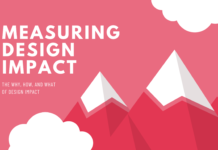From T-shaped to π-shaped designer
The role of designers is changing and new approaches are needed to foster a mindset that can support them to become more impact-focused and a key strategic partner. How can DesignOps help driving Designers’ transformation to maximise results and influence?Design has gone a long way in the past 10 ye..
Waterfall design isn’t dead, just having an identity crisis
There is a place where waterfall design belongs; And without it we’ll never keep up with rapid sprint cycles.
Continue reading on UX Collective »
UX inspiration from history: Sony Walkman
Today, many of us know the story of the Sony Walkman brand and how it influenced many other products in the 21 century. It was one of the first models of portable players to change the way people listen to music.The story of the classic Walkman ended in 2010 when Sony retired the cassette player. So..
The problem of over-relying on A/B testing
Don’t get me wrong, I’m a big fan of experimentation and metrics-driven product development. It brings scientific evidence to decision…
Continue reading on UX Collective »
Choosing a chart with your audience in mind
Using user-centered design to figure out the best chart for your audience.
Continue reading on UX Collective »
The user shows the way: elephant paths in organizational change
The elephant path. Wikipedia knows what it is. There, an elephant path is an “unofficial bicycle or walking path that is created…
Continue reading on UX Collective »
How do I measure the impact of my design?
For the past years, the way we measure Design has evolved. Previously, the measuring stick we use is how visually appealing it was, how…
Continue reading on UX Collective »
Black graphic designers who paved the way for Black designers of today
They were trailblazers.
Continue reading on UX Collective »
Why every website on the internet looks the same
What modern web designs can teach us about familiarity
Continue reading on UX Collective »
Radical bravery: How to design for vulnerability
Continue reading on UX Collective »










